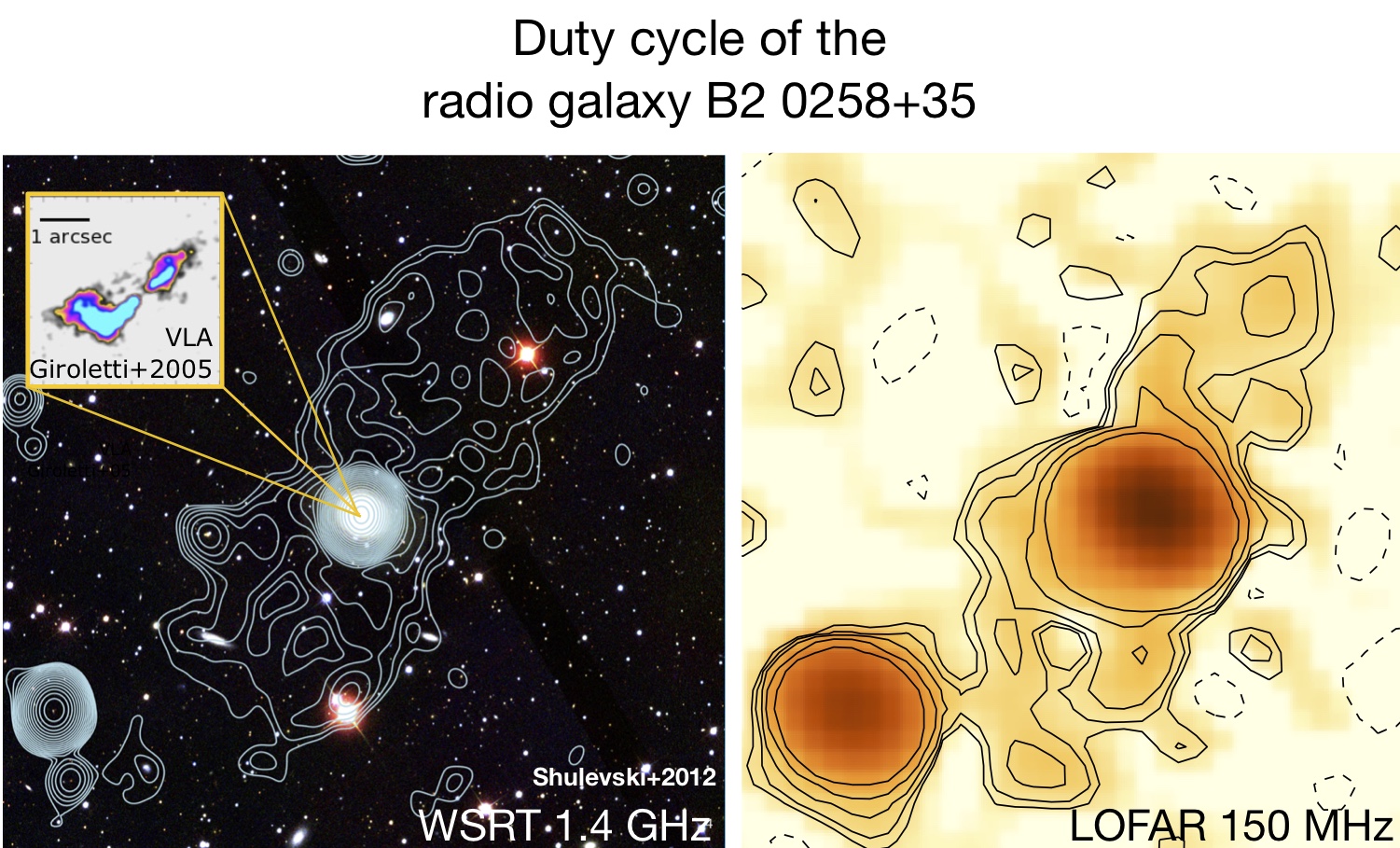 © SARAO/JIVE
© SARAO/JIVE
As MeerKAT's sampling rate and data formats are not yet VLBI compatible, software was developed by JIVE staff(*) to extract and resample 2 x 32 MHz, overlapping with the 8 x 8 MHz bands observed by the EVN stations, and reformat it to the VLBI Data Interchange Format (VDIF).
Shown are fringes between one MeerKAT (Me) dish, m011v, and the EVN stations Effelsberg, Germany (Ef) and Hartebeesthoek, South Africa (Hh) in all eight EVN bands. They appear in LR and RR polarization because the MeerKAT receivers are linear whilst VLBI telescopes observe in circular.
Finding VLBI fringes using a single 13.5 m MeerKAT dish on an 8000+ km baseline clearly demonstrates the excellent quality of the dish and receiver system. Fringes were also found using the beamformed output, using the same signal processing chain. These, however, are still under investigation.
This result, while modest, is an important first step(**) towards including the phased-up MeerKAT in global VLBI observations, and, eventually the SKA.
These fringes are the result of a close cooperation between staff at the SKA-SA/SARAO office and JIVE.
(*) Entirely in python, with help from the numpy and SciPy modules
(**) It takes over an hour to extract ten seconds worth of data from the single dish time series. Converting the complex spectra from the beamformer takes an order of magnitude longer.
 © ASTRON
© ASTRON  © ASTRON
© ASTRON © Paul Boven (JIVE/CAMRAS)
© Paul Boven (JIVE/CAMRAS) © ASTRON/JIVE
© ASTRON/JIVE © Neal Jackson/Long Baseline Working Group
© Neal Jackson/Long Baseline Working Group © JIVE
© JIVE © Quokka image modified based on picture credited to cutestuff.co by buzzfeed and including map of the Galactic Rotation Measure foreground (Oppermann et al 2015, A&A 575, 118); all others G. Heald.
© Quokka image modified based on picture credited to cutestuff.co by buzzfeed and including map of the Galactic Rotation Measure foreground (Oppermann et al 2015, A&A 575, 118); all others G. Heald. © ASTRON
© ASTRON © Photos: ASTRON, Youtube movie: TU Eindhoven
© Photos: ASTRON, Youtube movie: TU Eindhoven © ASTRON
© ASTRON © G. Schoonderbeek
© G. Schoonderbeek © ASTRON
© ASTRON © Roy de Goei / 11fountains.nl
© Roy de Goei / 11fountains.nl © Krzysztof T. Chyzy et al.
© Krzysztof T. Chyzy et al. © Vanessa Moss
© Vanessa Moss © ASTRON
© ASTRON © Frank Nuijens
© Frank Nuijens © Benito Marcote & MAGIC Collaboration
© Benito Marcote & MAGIC Collaboration © ASTRON
© ASTRON







